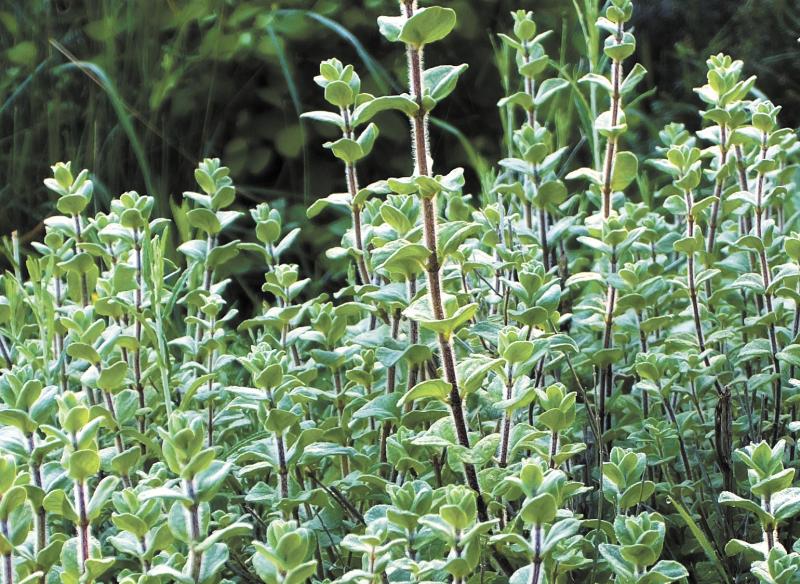Cleopatra, the last ruling pharaoh of Egypt, was nothing if not a great saleswoman. As a direct descendent of Alexander the Great, her native language was Greek, yet she endeared herself to the public by learning and speaking Egyptian. She even covered her red hair with a black wig to look more Egyptian. If her beauty is considered goddess-like, perhaps it is because she was also unashamedly the human reincarnation of the Egyptian goddess Isis.
If you are a goddess you should eat like a goddess, so Cleopatra bet Mark Antony she could spend 10 million Roman coins on a single dinner. The dinner was purposely very plain and the food ordinary. Then at the second course, Cleopatra dropped a priceless pearl into a cup of strong vinegar, waited for the pearl to dissolve, and drank a toast to her losing companion.
It is fitting that Cleopatra appears now in the garden as Cleopatra Oregano (Origanum syrica Cleopatra). As expected, this is quite a bit different from the Italian and Greek oregano (Origanum vulgare hirtum) of pizza fame. Cleopatra oregano is only slightly spicy, with none of the harsh aftertaste of common oregano. In fact, the herb has overtones of fresh mint, making for a soothing, cool taste.
The foliage is a beautiful silver-gray on dwarf trailing plants spreading up to 12 inches across and just six inches high. Cleopatra oregano is ideal to grow indoors or potted on a patio. It can be planted outdoors in masses for fragrant, edible perennial ground cover.
You can sow the seeds directly in the garden anytime after the ground has warmed up and all danger of frost is past. The seeds need light to germinate, so just barely cover them with fine soil. They will sprout in 10 to 21 days. To get a head start, sow Cleopatra oregano indoors six to 10 weeks before setting out the plants in the garden.
After three weeks, you can fertilize with a liquid organic fertilizer applied at half strength, though they also do well without any fuss. After the plants have at least three full sets of leaves, thin them to stand about a foot apart. An organic mulch such as shredded leaves or straw helps the soil retain moisture and keeps it from getting too hot and damaging fine roots. As the mulch breaks down, it will fertilize the soil. To prevent rot, keep mulch away from the plant stems.
Water the new plants regularly during the first growing season if the rainfall is under one inch per week. You can propagate Cleopatra oregano by dividing adult plants in the spring.
For best flavor, cut the leaves early in the morning after the plants are dried of dew. Unless you are saving seeds, pinch off any flower buds. To dry the leaves, tie the stems together and hang them in a dark, dry place with good ventilation.
You can freeze Cleopatra oregano by chopping the fresh leaves and freezing in individual ice cubes.
Plant Cleopatra oregano, and you will have something more minty and less harsh. Perfect to complement a Mediterranean dish. And contemplate that because Cleopatra was born in 69 BC and the Great Pyramid was built around 2580-2560 BC, and the iPhone was launched in 2007 AD, Cleopatra lived closer to the creation of the iPhone than the building of the Great Pyramid.






















































